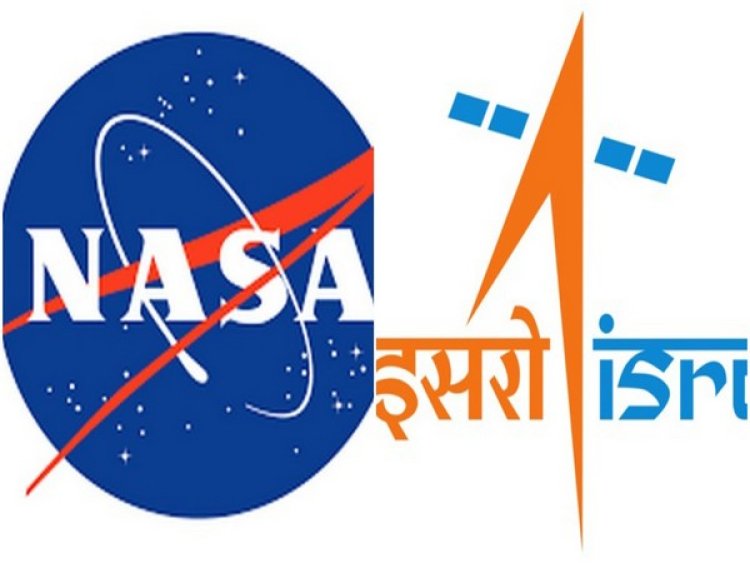US-Indian satellite to monitor frozen surfaces in Earth's ice and snow-covered environments

Washington, DC, US: NISAR, the radar satellite, set to be launched this year in joint collaboration with the Indian Space Research Organisation (ISRO) and US space agency National Aeronautics and Space Administration (NASA), will measure some key Earth vital signs, including the health of wetlands, ground deformation by volcanoes, and the dynamics of land and sea ice.
It will measure the health of wetlands from ground deformation by volcanoes to the dynamics of land and sea ice," NASA's Jet Propulsion Laboratory said in a press release.
This will help researchers decipher how small-scale processes can cause monumental changes in the ice sheets covering Antarctica and Greenland, as well as on mountain glaciers and sea ice around the world.
"Short for NASA-ISRO Synthetic Aperture Radar, NISAR will provide the most comprehensive picture to date of motion and deformation of frozen surfaces in Earth's ice- and snow-covered environments, collectively known as the cryosphere," the release said.
The target launch readiness date is January 2024, according to ISRO.
Alex Gardner, a glaciologist at NASA's Jet Propulsion Laboratory in Southern California said, "Our planet has the thermostat set on high, and Earth's ice is responding by speeding up its motion and melting faster."
"We need to better understand the processes at play, and NISAR will provide measurements to do that," he added.
Set to be launched in 2024 by ISRO from southern India, NISAR will observe nearly all the planet's land and ice surfaces twice every 12 days, according to NASA Jet Propulsion Laboratory press release.
The satellite's insights into Earth's cryosphere will come from the combined use of two radars: an L-band system with a 10-inch (25-centimeter) wavelength and an S-band system with a 4-inch (10-centimeter) wavelength.
NISAR's orientation in orbit will enable it to collect data from Antarctica's far interior, close to the South Pole. Antarctica's ice sheets hold the planet's largest reservoir of frozen fresh water, and the rate at which it may lose ice represents the greatest uncertainty in sea level rise projections, according to NASA Jet Propulsion Laboratory.
According to the press release, NISAR's increased coverage will be crucial for studying the motion of ice flowing down from central Antarctica's high elevations towards the sea. The measurements will also enable scientists to closely study what happens where ice and ocean meet.
Both Antartica and Greenland have ice shelves--masses of ice that extend from land and float on the ocean that are thinning and crumbling as icebergs break off. Ice shelves help keep glacial ice on the land from slipping into the ocean. If they are diminished, glaciers can flow and calve faster.
Ice losses on both Antarctica and Greenland have accelerated since the 1990s, and there's uncertainty about how quickly each will continue to recede. NISAR will improve horizontal and vertical views of these changes.
"NISAR will give us a consistent time-lapse movie of that motion, so we can understand how and why it's changing and better predict how it will change into the future," said Ian Joughin, a glaciologist at the University of Washington in Seattle and the NISAR cryosphere lead.
The satellite will also track changes in Earth's mountain glaciers. In the Himalayas, NISAR's all-weather capability will help researchers monitor how much water is stored in glacial lakes, which is essential to analysing the risk of catastrophic floods.
Sushil Kumar Singh, a glaciologist at the ISRO Space Applications Centre in Ahmedabad, said, "The beauty and the difficulty of the Himalayas are the clouds." "With NISAR we will be able to get a more continuous and complete data set that would not be possible with instruments that use visible light."
NISAR will also capture the movement and extent of sea ice in both hemispheres. Sea ice insulates the ocean from the air, reducing evaporation and heat loss to the atmosphere. It also reflects sunlight, keeping the planet cool through the albedo effect.
As rising water and air temperatures have increased melting, Arctic sea ice has been diminishing. With more of its surface exposed to sunlight, the Arctic Ocean gains and holds more heat in summer and takes longer to cool. This means less ice formation in winter and faster melting the next summer, according to JPL sea-ice scientist Ben Holt.
With greater coverage of the Southern Ocean than any radar mission to date, NISAR will open new insights around Antarctica, where sea ice had mostly been more stable until the past few years. It reached a record low in 2023.
According to NASA's Jet Propulsion Laboratory press release, NISAR is an equal collaboration between NASA and ISRO and marks the first time the two agencies have cooperated on hardware development for an Earth-observing mission.
NASA's Jet Propulsion Laboratory leads the US component of the project and is providing the mission's L-band SAR, according to the press release. NASA is also providing the radar reflector antenna, the deployable boom, a high-rate communication subsystem for science data, GPS receivers, a solid-state recorder, and payload data subsystem.
Meanwhile, U R Rao Satellite Centre (URSC) in Bengaluru, leads the ISRO component of the mission, is providing the spacecraft bus, the launch vehicle, and associated launch services and satellite mission operations. ISRO's Space Applications Centre in Ahmedabad is providing the S-band SAR electronics.















































